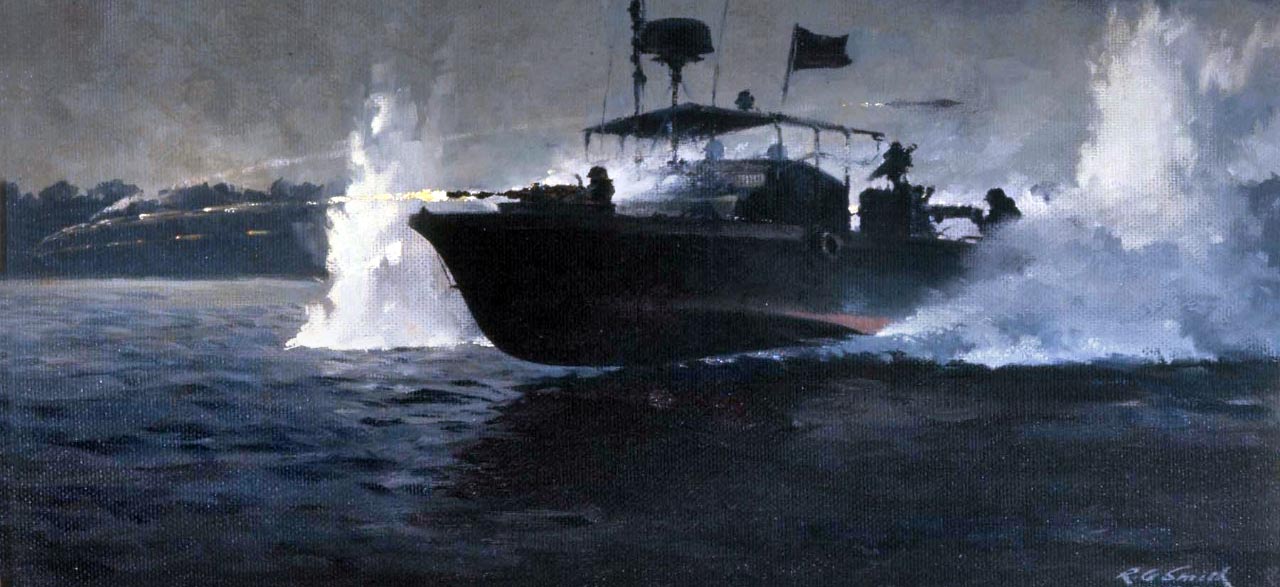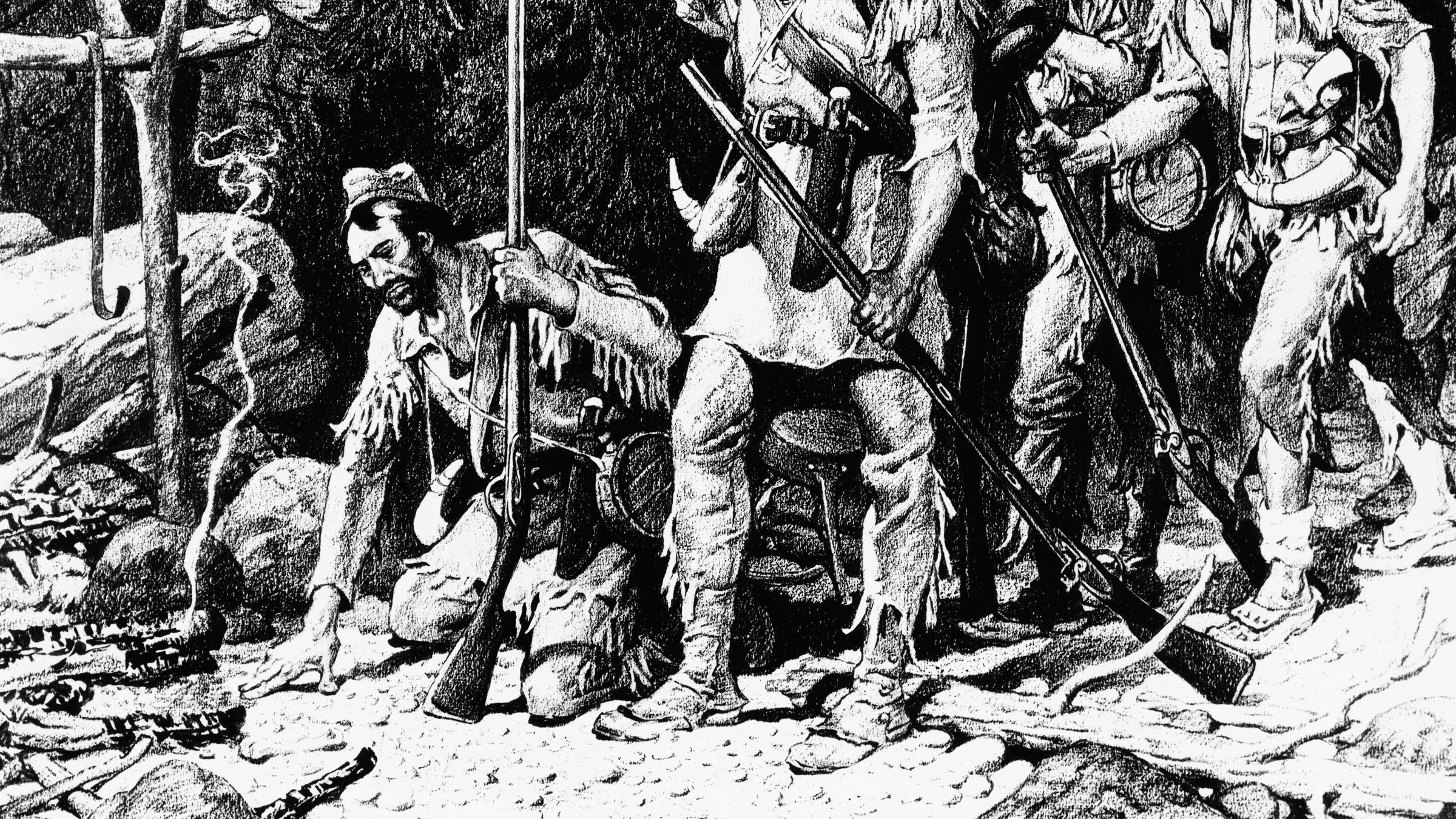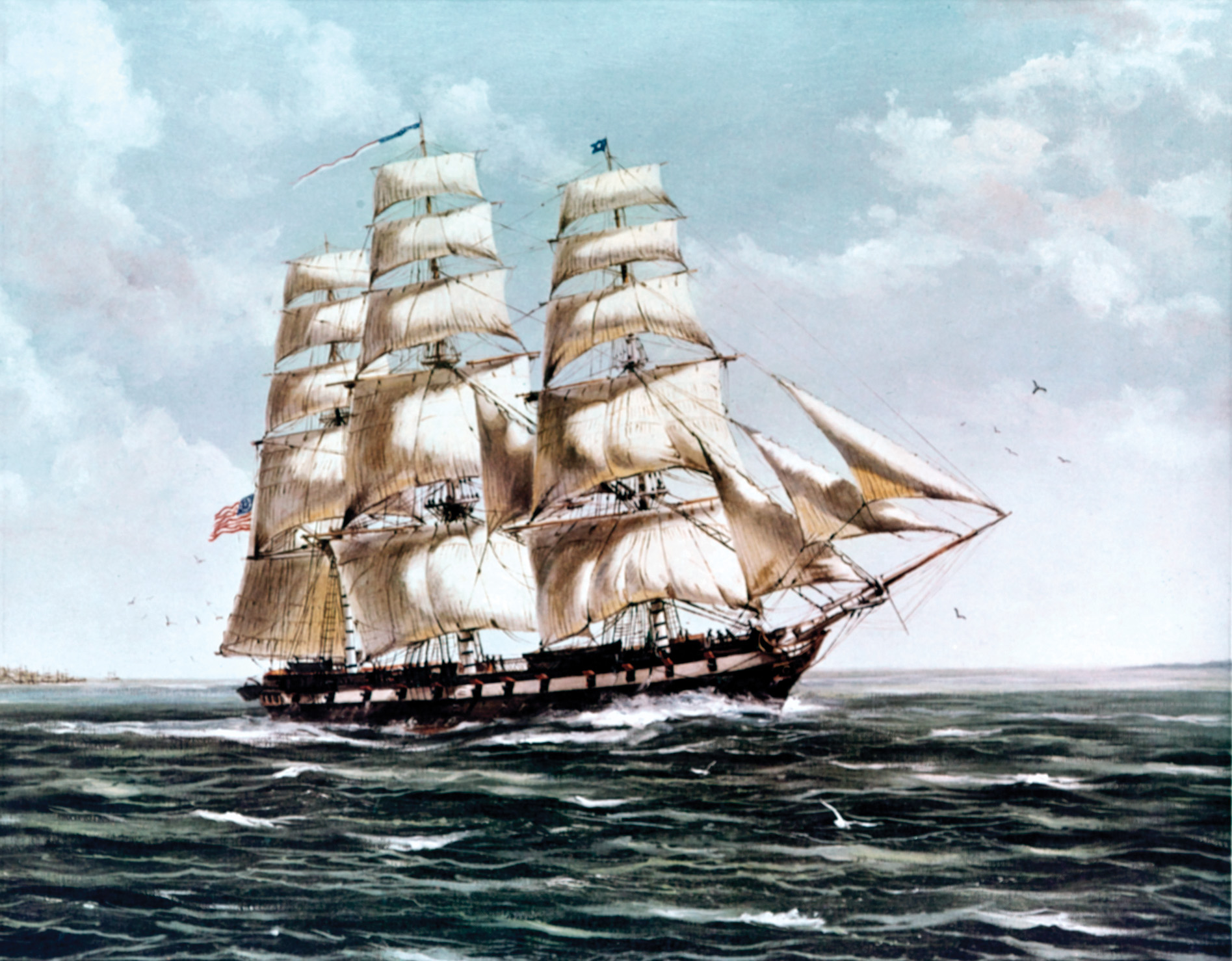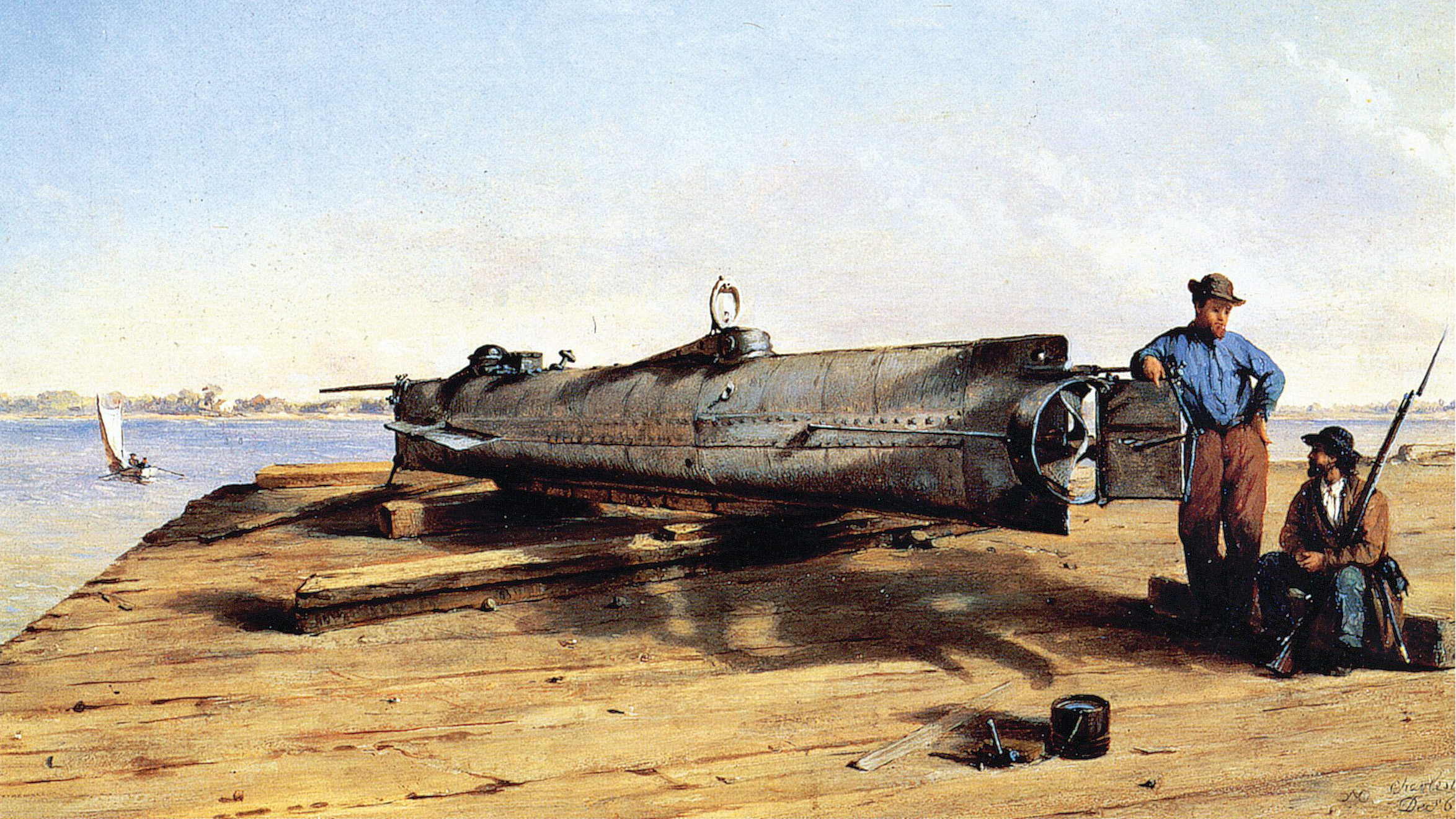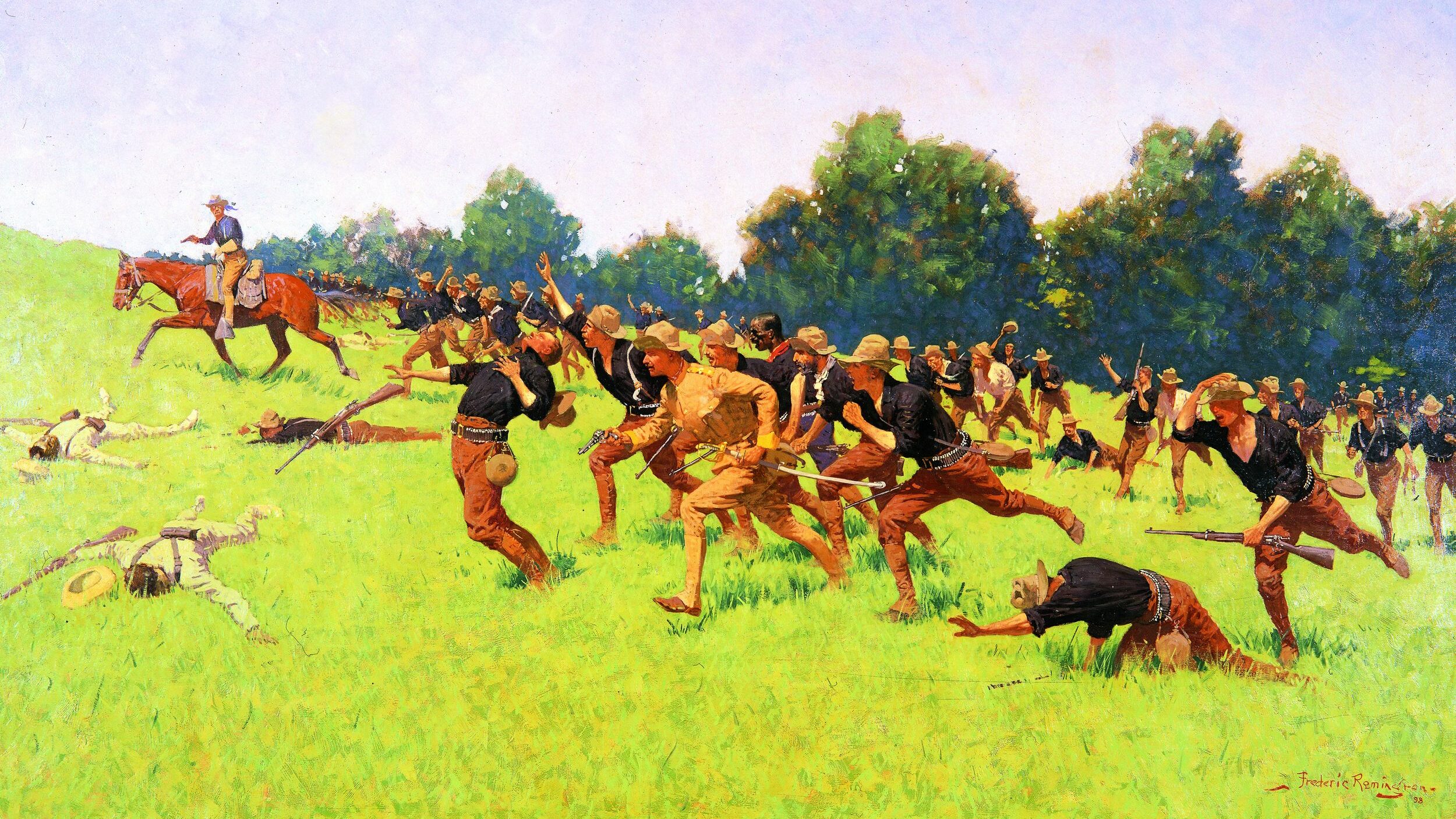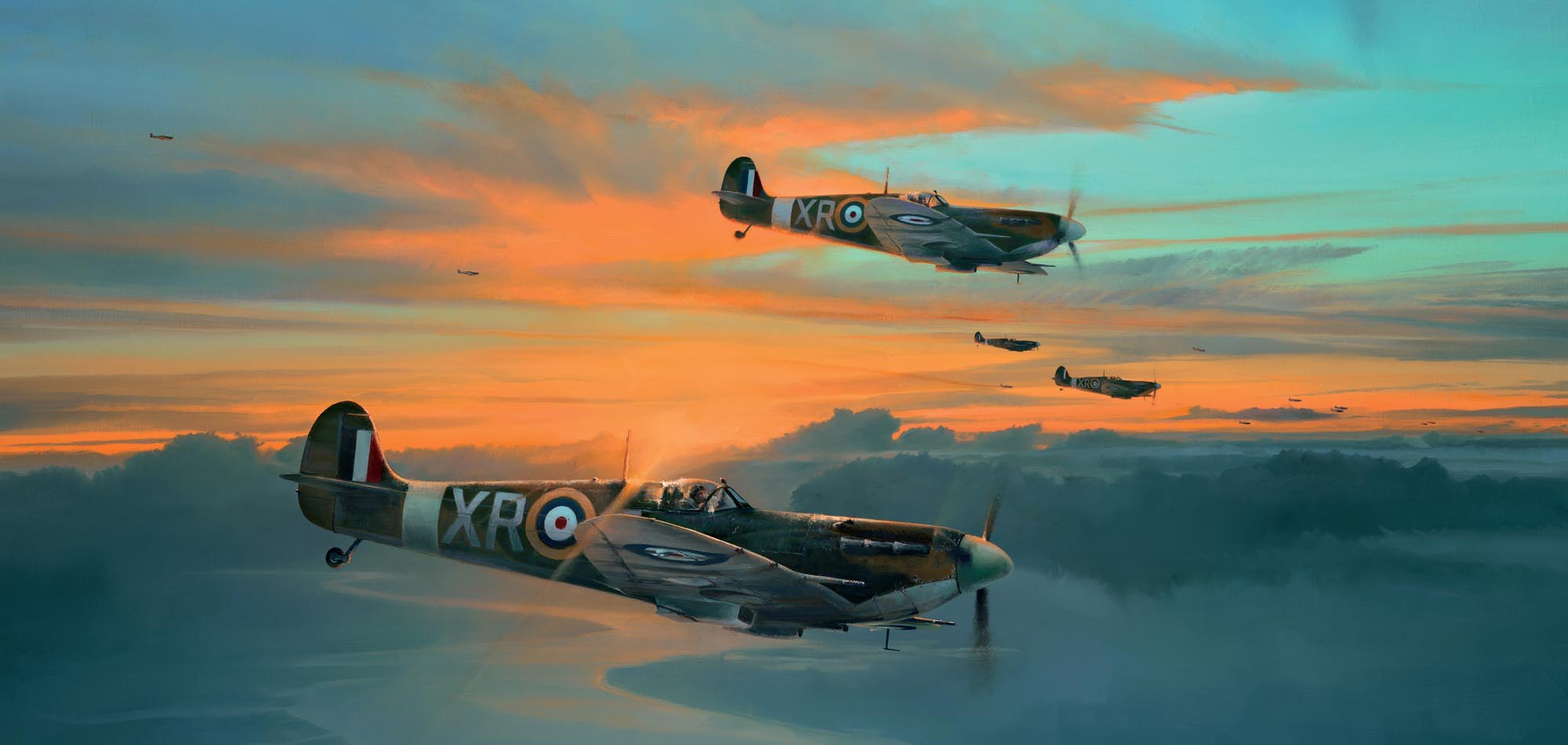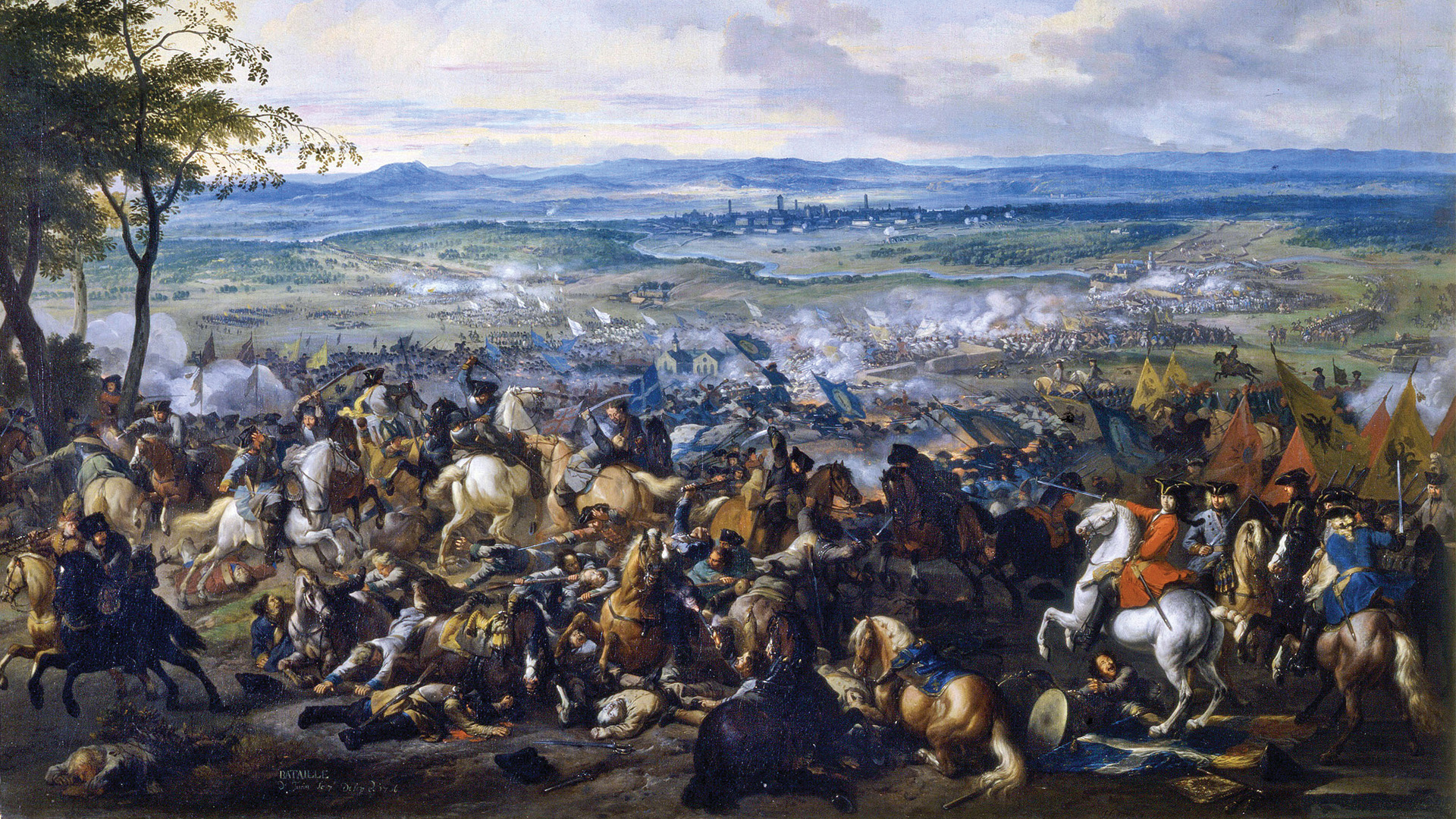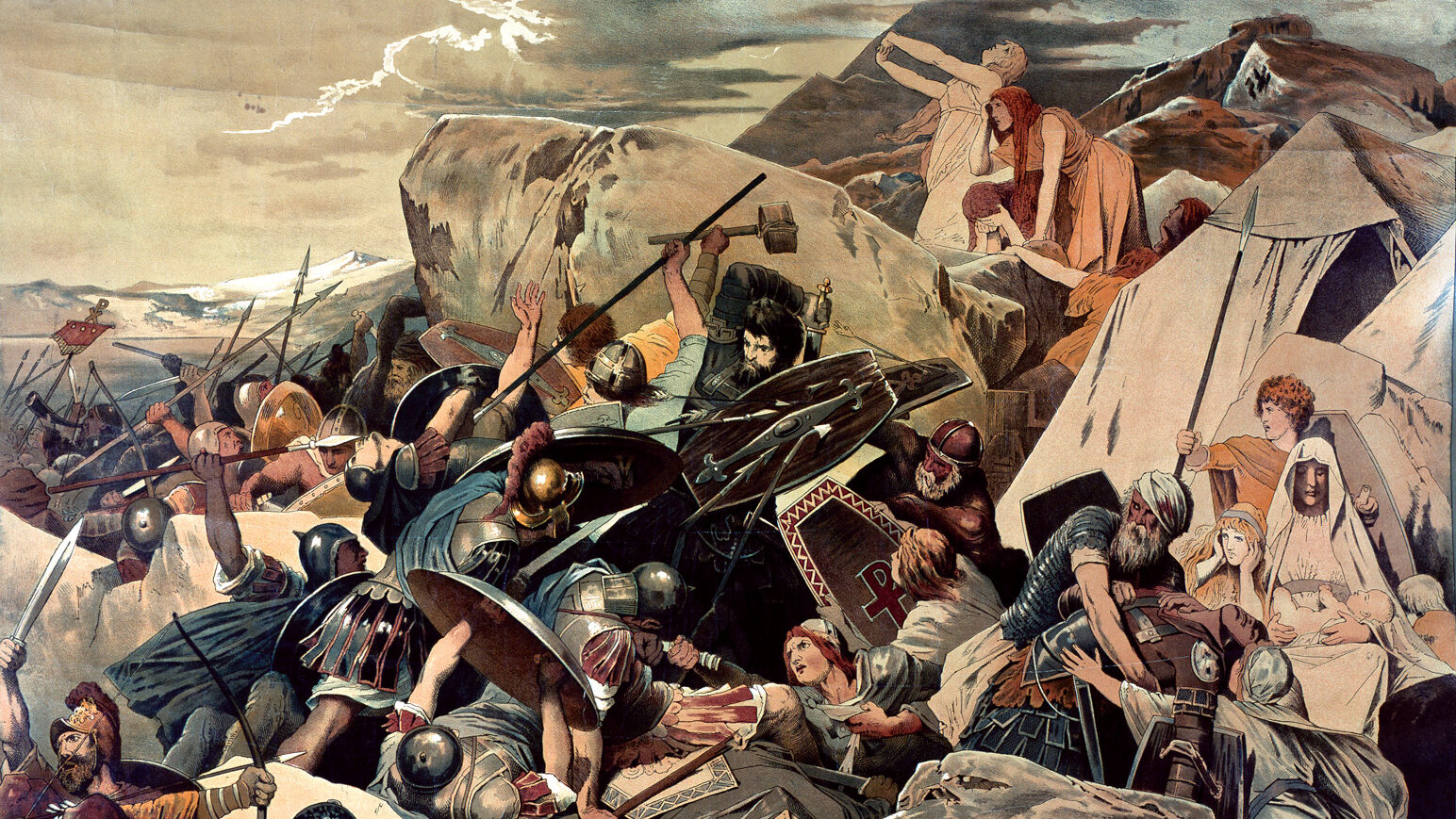By William F. Floyd Jr.
The U.S. Navy deployed a variety of small boats to South Vietnam during the Vietnam War, but perhaps the best known of these is the river patrol boat. The “patrol boat: riverine,” or Navy PBR, was the first watercraft built for the so-called brown water navy in Vietnam. During the height of the conflict, Navy personnel scouted the rivers and canals of the sprawling Mekong Delta for communist guerrilla forces, arms, and ammunition. In addition to patrolling, Navy PBRs participated with Navy and Army troops in hit-and-run raids, reconnaissance patrols, and day and night ambushes.
Origins of the Navy PBR Boat
The origins of the Navy PBR can be traced to Hatteras Yacht Company of New Bern, North Carolina, which in 1965 responded to a U.S. Navy request for a prototype for a small patrol boat to operate in shallow waters. The Navy’s Bureau of Ships sought a prototype for what it designated as “patrol boat, river” that could achieve speeds between 25 to 30 knots, draw only nine inches of water, and skim over sandbars. The boat would be crewed by four sailors and have heavy armament. Its armament would consist of a twin .50-caliber machine gun in an armored forward turret, as well as a .30-caliber mounted gun in the aft section. Additionally, the boat would need to be able to reverse direction, turn on a dime, and come to a quick stop from full speed within a few boat lengths.
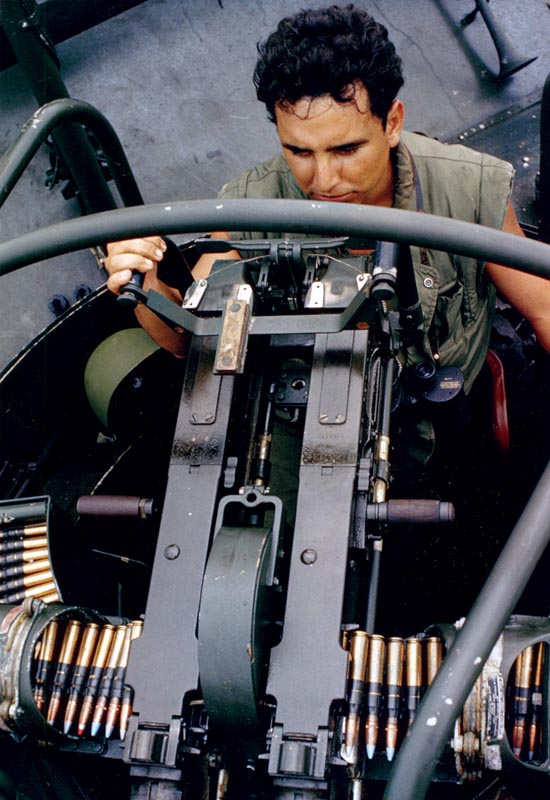
Hatteras stated its intention to build a 28-foot fiberglass hull powered by water-jet pumps as opposed to screw propellers. The water pumps would enable the new boat to go into shallow water. The Navy put the PBR contract out for bid, and eight companies responded with bids. United Boat Builders of Bellingham, Washington, ultimately won the contract. The company built the PBR around its existing 31-foot fiberglass hull. This boat became PBR Mark I. The Navy initially requested 120 PBRs. Eighty of the Navy PBRs were assigned to the Mekong Delta and 40 to the Rung Sat Special Zone south of Saigon.
The dark-green Mark I was powered by twin General Motors 220-horsepower diesel engines and water jet pumps supplied by Jacuzzi Brothers. The jet pumps shot out streams of water from nozzles located below the waterline on the stern. The jets of water had sufficient thrust to propel the boat. Steering was accomplished by rotating the nozzles left or right. For stern propulsion, a so-called u-gate slipped down over the nozzles and rerouted the flow 180 degrees, which propelled the boat backward. When fully loaded, the boat topped out at 14,600 pounds and could reach a speed of 25.7 knots.
The builder installed ceramic armor designed to deflect bullets up to .30 caliber around the coxswain’s flat and at the weapons stations. The boat’s heaviest weapon, the twin .50 caliber, was installed in an open turret in the bow. In the fantail area, a single machine gun was affixed to a pedestal. Amidships on both sides of the boat were open-ended receptacles to which could be mounted either an M-60 machine gun or an MK-18 grenade launcher. A similar receptacle built into the aft machine mount allowed an MK-18 to be piggybacked with the stern machine gun.
In addition to the mounted machine guns, the crew also took along M16 rifles, M-79 grenade launchers, handguns, and hand grenades. The boat came equipped with a Raytheon 1900/N radar system and two AN/VRC046 FM radios.
The hull could be repaired quickly and easily. It was designed so that enemy rounds would pass through it without exploding. There was no solid surface that would cause detonation.
Slow, and Prone to Drawing Water: Drawbacks with the Mark I
The Navy PBR Mark I was not immune to problems. When fully loaded, the Mark I drew 22.5 inches of water, which greatly exceeded the nine inches originally requested. Added to that, the Mark I never attained the desired speed of 25 knots. This was because the jet pumps put a heavy strain on the boat’s diesel engines. Added to this, Styrofoam blocks that kept the boat high in the water frequently became waterlogged as a result of seepage through the hull.
The four-man crew for the Navy PBR included a first-class petty officer who served as the boat’s captain. Owing to battle casualties and other reasons, both chiefs and second-class petty officers also captained the boats. The other crew members were an engineman, a gunner’s mate, and a seaman.
Large numbers of communist forces operated in the Mekong Delta region, not only because it contained half of South Vietnam’s population and was responsible for half of the country’s rice production, but also because of its close proximity to Saigon. The communists routinely transported men and supplies through its 3,000 miles of waterways. As they did so, the communists actively recruited in the region and extorted funds from the local people to finance their operations. Communist forces carried out an estimated 1,000 small-scale attacks each month in 1966 on government posts and villages in the Mekong Delta.
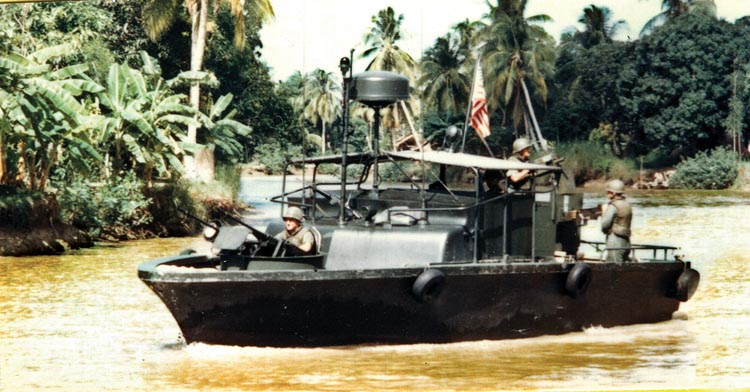
Common Tactics of Navy PBR Crews
One of the fundamental tactics developed for the Navy PBRs was to operate in pairs while conducting patrols. The two boats would travel in a column, with the trailing boat following 400 to 600 yards behind the lead boat. This way the two boats were close enough to cover each other. The crews conducted patrols and searches during the day and at night. When searching a vessel at night, the boat conducting the search approached the suspect craft at high speed, illuminated the vessel, and ordered all occupants to show themselves on the near side of the watercraft.
The PBRs sought to stay in the middle of the channel to maintain as much distance between the boat and shore as possible in case enemy forces were lurking in the foliage. During a search, the crew of the PBR kept a .50-caliber machine gun trained on the shore opposite the vessel being searched in case it was fired upon from behind.
The U.S. Navy launched Operation Game Warden on December 18, 1965, and established a River Patrol Force in South Vietnam to maintain military curfews and implement the interdiction program in both the Mekong Delta and Rung Sat Special Zone. As part of the program, PBR crews routinely stopped and searched suspect sampans to see if they were transporting guerrilla troops or smuggling military provisions for communist forces.
The River Patrol Force, also known as Task Force 116, was composed of a number of river divisions. Each division had two 10-boat sections. The River Patrol Force operated from LSTs (landing ships, tank) that served as floating bases complete with troop quarters. The PBRs served as the core watercraft for these riverine divisions. The first batch of Navy PBRs arrived in country in March 1966 during the continuing buildup of U.S. forces in South Vietnam.
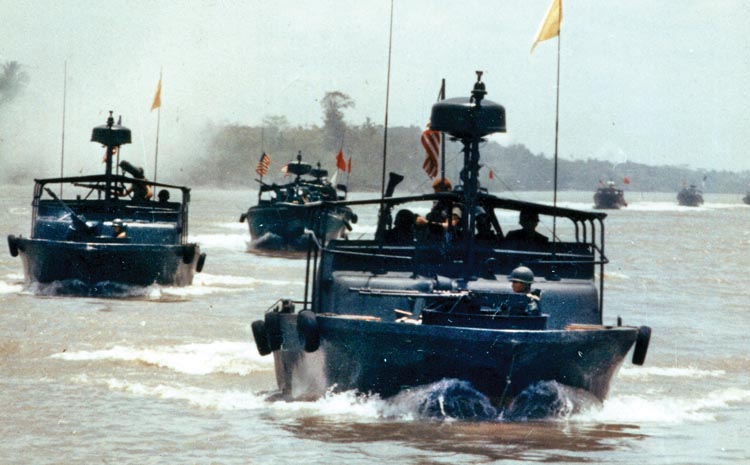
To furnish close air support for the PBRs in the delta, the Navy activated Helicopter Attack Squadron 3 at Vung Tau. In addition, Navy SEAL platoons operated with the River Patrol Force, giving it the ability to conduct clandestine intelligence operations.
Navy PBR crews routinely used tape recorders and loudspeakers to announce curfew hours and issue instructions to Viet Cong who might wish to defect. They also performed humanitarian missions, such as transporting medical personnel to isolated villages and wounded villagers to field hospitals.
PBRs Receive Critical Upgrades
After their initial experience using their new watercraft, PBR crews made some key improvements to the weapons systems on the boats. First and foremost, they replaced the .30-caliber machine gun aft with a .50-caliber to reduce the necessity of having to carry two different types of ammunition. They also added an M-18 grenade launcher and stripped most of the armor from the forward machine-gun position to improve the gunner’s field of vision.
A joint service Mobile Riverine Force began operating in June 1967. The principal organizational elements of the force were Navy Task Force 117 and the U.S. Army’s Ninth Infantry Division’s Riverine Forces. The riverine force was capable of deploying 150 miles from its base within 24 hours. It possessed a 5,000-man combat force that could engage the enemy immediately upon arrival at its destination. The riverine force’s initial anchorage was at Vung Tau on the coast southeast of Saigon, but it eventually moved to Dong Tam in the upper Mekong Delta.
The advent of the Mobile Riverine Force in the delta marked a shift in the balance of power in the region, with the allies gaining superiority over the communists. The Riverine Force fought five major actions during 1967, in which it killed 1,000 communist troops. The enemy frequently fought in battalion strength in the larger of these engagements. In addition to small arms, they used a variety of heavy weapons, including machine guns, rocket launchers, and recoilless rifles.
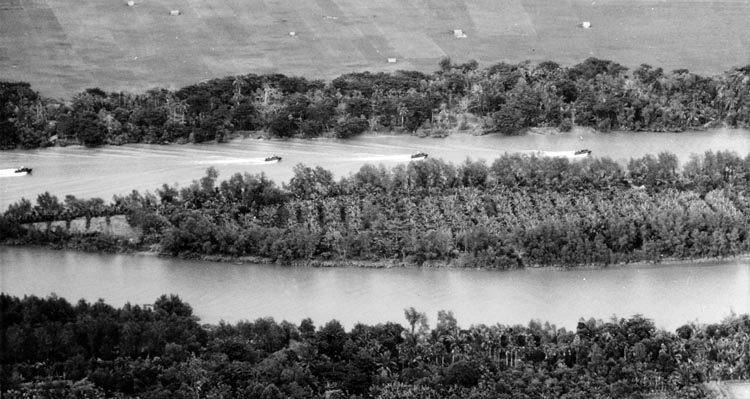
The Mobile Riverine Force conducted a series of major combat operations, including Coronado I through XI from 1967-1968, Giant Slingshot from 1968-1969, and Sealords from 1968-1971. The purpose of these operations was to isolate and destroy Viet Cong and North Vietnamese units and dismantle their infrastructure in the Mekong Delta and the Capital Military District.
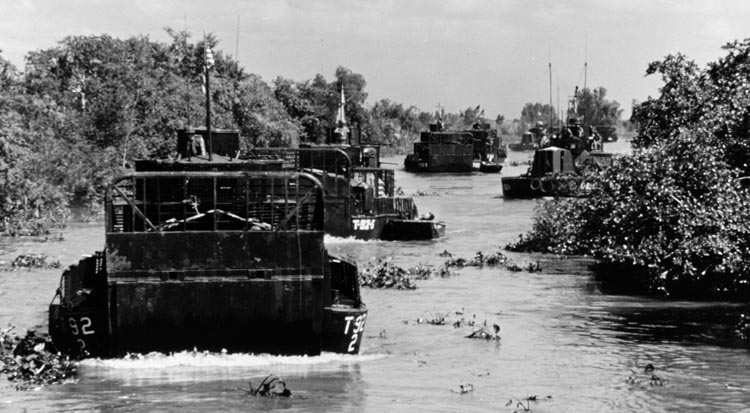
The Mark II and the Tet Offensive
In September 1967, the River Patrol Force obtained a new, completely modified Navy PBR, the Mark II. The new model had larger, improved water jet pumps made from a metal less prone to corrosion. Additionally, the boats boasted a new circuitry system for the forward twin .50-caliber machine guns. The boat was also capable of much higher speeds than its predecessor. Not long after the introduction of the Mark II, a new Alfa model was introduced with even more upgrades. By early 1969 there were 250 river patrol boats in South Vietnam, including 130 Mark II and Mark II Alfa PBRs, as well as 120 Mark I PBRs.
Communist troops attacked more than 100 of South Vietnam’s cities and towns on January 31, 1968, during the Vietnamese Lunar New Year holiday known as Tet. The size and the ferocity of the Tet Offensive put U.S. and South Vietnamese forces on the defensive.
In the Mekong Delta region, the communists attacked 64 district capitals. The Tet Offensive resulted in an uptick in riverine units being used for fire support, troop transport, and amphibious assault. Up until Tet, PBRs typically called for naval or aerial assistance and then withdrew until help arrived before re-engaging the enemy; however, the Navy loosened the rules of engagement during Tet: If the patrol officer in charge of the PBR decided his boat could stand and fight, he had the discretion to do so. Another change in doctrine occurred regarding where the PBRs patrolled. Before Tet, PBRs generally stayed in the main rivers of the delta region, but during the communist offensive they began to operate in canals and other narrow waterways.
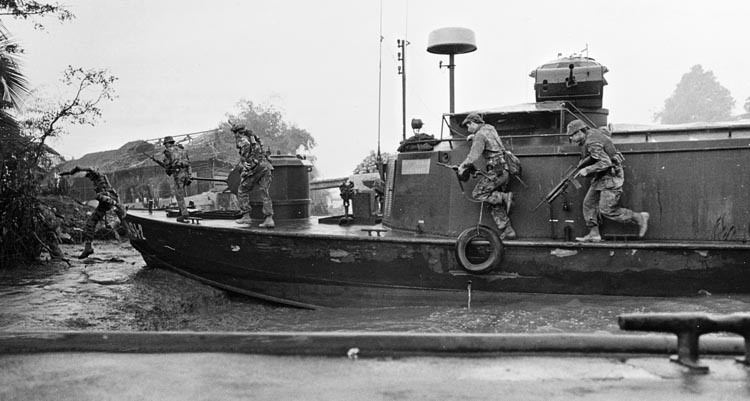
The PBRs in the Vietnam War played a key role in riverine operations and achieved positive combat results. In the course of their patrols and operations, U.S. Navy riverine forces killed 3,000 communist soldiers and sank, damaged, or captured upward of 6,500 boats.
Some key statistics offer insight into the hazards of PBR service. One of every three PBR sailors was wounded during his tour of duty. Yet this in no way deterred the volunteers who clamored to serve aboard the boats. Volunteers for the PBRs came from all U.S. Navy rates, ratings, and ranks. Furthermore, morale among the PBR crews remained high throughout the conflict.
For these reasons, the Navy PBR crews that served during the Vietnam War were highly respected by sailors and soldiers alike. “We were volunteers [and] patriots,” said Petty Officer Jere Beery, reflecting on his service on a PBR. “We were gung-ho as hell. We looked for trouble.”
